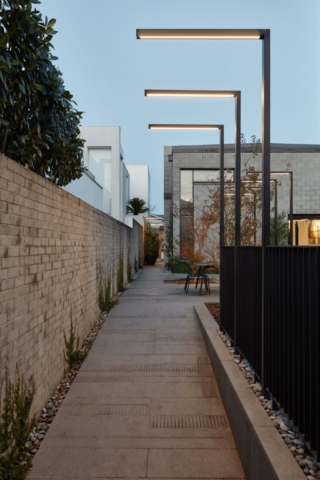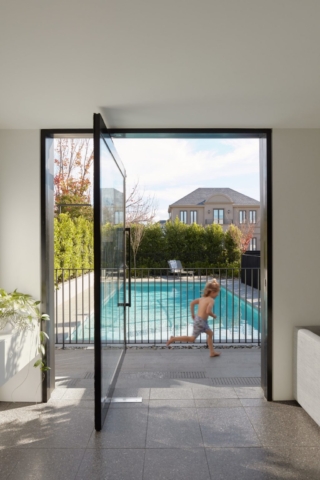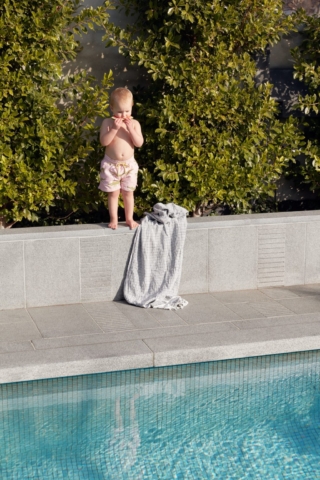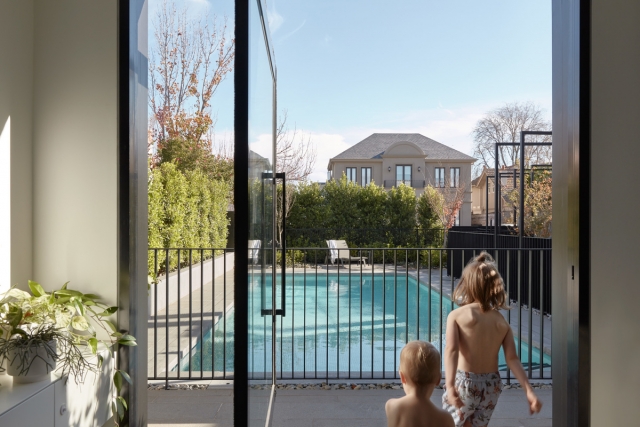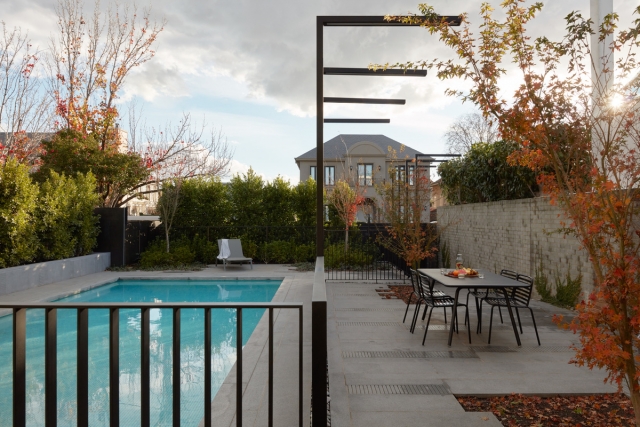In 1972, Neil Clerehan, a celebrated Melbourne modernist architect and contemporary of Robin Boyd, completed a modest concrete block home in Toorak, a wealthy suburb of Melbourne in Australia.
Clerehan placed the home to the rear of the site, leaving a large west-facing walled courtyard that is both the front entry and ‘back yard’ complete with a large pool.
Also in 1972, digital watches were introduced and Australian Women’s Weekly released the Busy Woman’s Cookbook aimed at the growing number of women who worked outside the home, helping them prepare microwave delicacies.
Whilst Cherehan’s home remained elegant and robust, many things have changed since 1972.
Contemporary family life has moved on from microwave cooking by a ‘busy woman’.
So the owners commissioned Public Realm Lab to design an update of their yard
They wanted to be better connected to their yard, and to live, cook and eat outside when the weather permitted.
They needed the pool to be fenced in order to be safe for their toddlers and they wanted some privacy and seclusion from neighbouring buildings that had been growing steadily over the past decades.
Public Realm Lab set about understanding their client’s life, rituals, routines as well as the site, sun, views and bulky neighbouring buildings.
They then designed bespoke lights, fencing, pavers and planting to create spaces within the yard to sit, to eat, to play.
The materials and shapes were sympathetic to Clerehan’s home, picking up on the ‘L’ shaped window and black steel framing.
A key idea that Public Realm Lab had was to create a sense of ‘space’ between each of the elements: pavers peel away to allow the garden to soften edges, pebbles are introduced to separate materials and allow for hours of toddlers’ entertainment.
The ‘stuff’ of modern life was concealed to create a sense of calm that allowed their clients and their clients’ friends to focus on their time together in the sun.
The Brief
The brief was to reconfigure all of the outdoor spaces from boundary to boundary to create a new entry, pool fencing, places for cooking and eating.
The Design Solution
Public Realm Lab created a series of bespoke elements that did many jobs – the pool fence included bespoke lighting that gently defined places to sit and also showed the way to the front door.
In this fairly tight space, it was important not to introduce too many materials, textures, and elements.
Public Realm Lab designed custom pavers that subtly introduced texture and that ‘bleed’ into the garden beds to soften the edges.
Key Challenges
The big challenge for Public Realm Lab with this project was that the home has only one outdoor space that must function as the front yard and back yard.
Within this small space, Public Realm Lab needed to create spaces for sitting, eating, and cooking, but also define the path from the front gate to the front door.
As the existing, large pool is in the best spot for winter sun, Public Realm Lab needed to find a way to create a spot to sit in the sun in Melbourne’s mid seasons.
Project Details
Project size – 180 m2
Completion date – 2017
Building levels – 1
Project Team
Architecture
Public Realm Lab
Public Realm Lab is a design practice that connects strategy, culture and place.
They do that through master-planning, briefing, architectural design, and research.
Public Realm Lab is led by Anna Maskiell and Philip Ward.
Photography
Tom Ross
Tom Ross is an Australian architectural and editorial photographer, published internationally.
Photo Gallery
Click on a thumbnail image to enlarge.
Design © 2020 Public Realm Lab. All Rights Reserved. | Images © 2020 Tom Ross. All Rights Reserved.
Get the Builtworks Letter
In every edition of the Builtworks Letter, you’ll get the behind-the-scenes backstory as to how buildings are designed, built, and brought to life.
You’ll hear compelling stories, learn surprising ideas, meet engaging characters, and discover unique voices.


